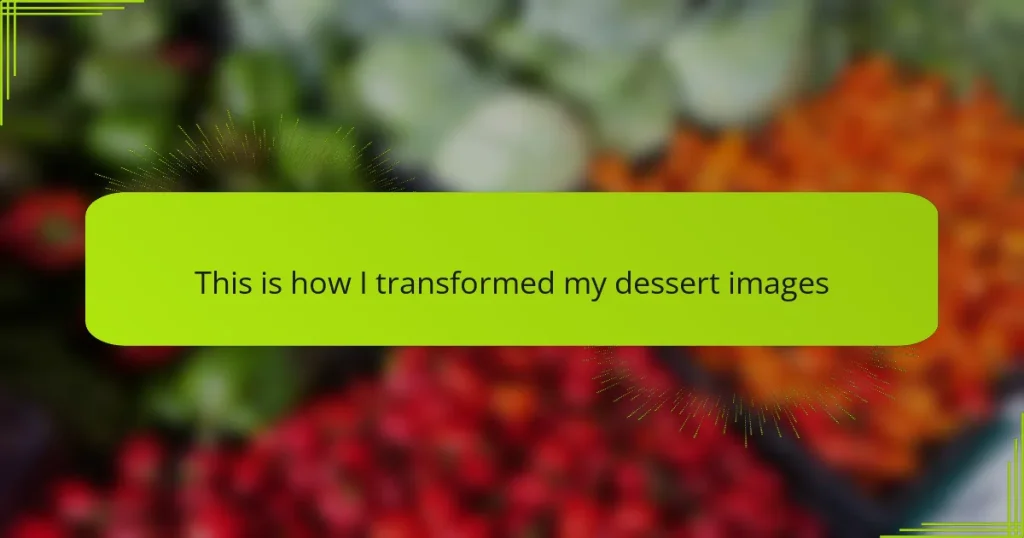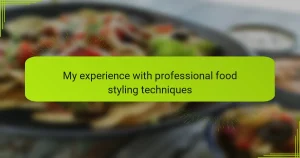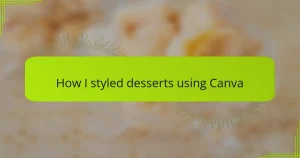Key takeaways
- Use natural light and experiment with angles to enhance the appeal of dessert photos.
- Keep backgrounds and props simple to ensure desserts are the focal point.
- Focus on garnishing and texture contrasts to create inviting images.
- Edit photos carefully, balancing brightness and avoiding oversaturation to maintain authenticity.

Understanding Dessert Photography Basics
When I first started photographing desserts, I quickly realized that lighting was everything. Natural light, especially from a nearby window, brings out the colors and textures in a way that artificial light just can’t replicate. Have you ever noticed how a perfectly lit cupcake looks almost too good to eat? That’s the magic of good lighting.
Angles are another game-changer. Shooting from above works great for flat layouts, while a side angle captures layers and details beautifully. I remember struggling to decide which angle worked best until I experimented a lot and learned to trust my eye. What angle tells your dessert’s story best?
Finally, background and props should complement, not compete with, the dessert. Simple plates and neutral tones often make the colors pop without distraction. It’s funny how the smallest change in a plate or napkin can elevate the whole image—have you tried swapping your usual setup just to see what happens?
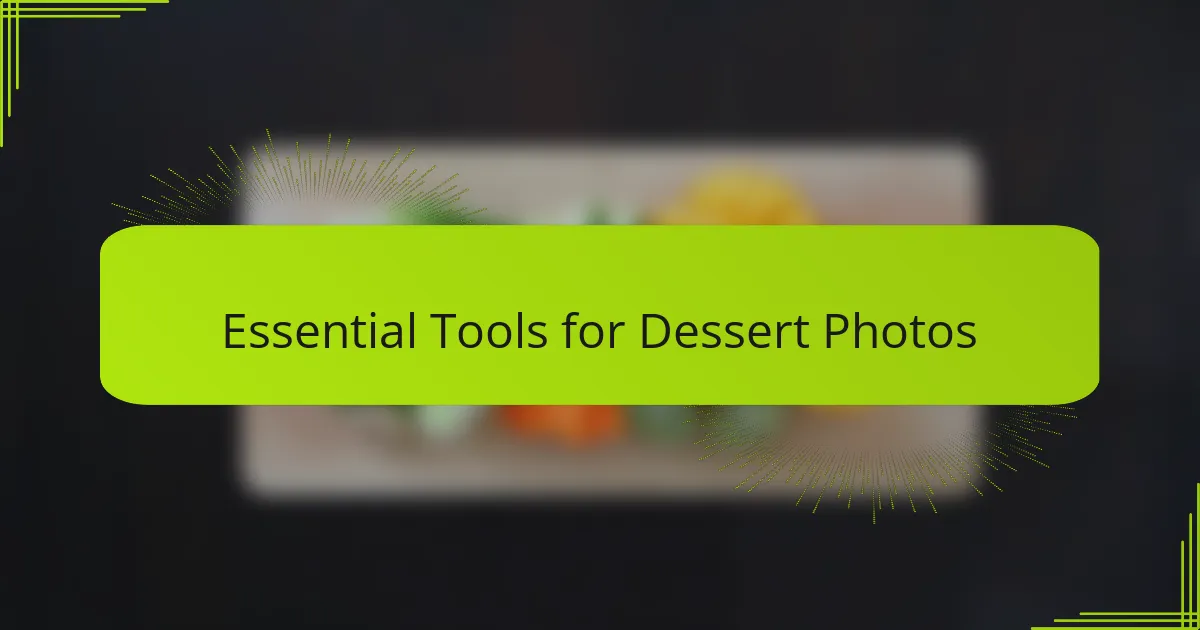
Essential Tools for Dessert Photos
One tool I swear by is a good DSLR or mirrorless camera, but honestly, even a smartphone with a decent camera can work wonders if you know how to use it. I remember when I upgraded from my old phone to a camera, the difference in detail was night and day. Have you ever zoomed in on a photo and noticed how crisp the crumbs or glossy icing look? That’s where the camera quality shines.
Tripods changed my game completely. It sounds simple, but holding the camera steady and composing the shot without any blur made a huge difference. I found myself taking way more creative shots once I wasn’t worrying about shaky hands. Do you struggle with blurry photos? A tripod might just be your new best friend.
Finally, investing in a few reflectors or white foam boards helped me bounce light back onto my desserts. It softens shadows and brings out those fine textures I love capturing. At first, I thought it was overkill, but after seeing the difference it made during a cloudy afternoon shoot, I was hooked. Have you ever tried DIY reflectors with something as simple as a piece of white cardboard? Give it a shot—you might be surprised!
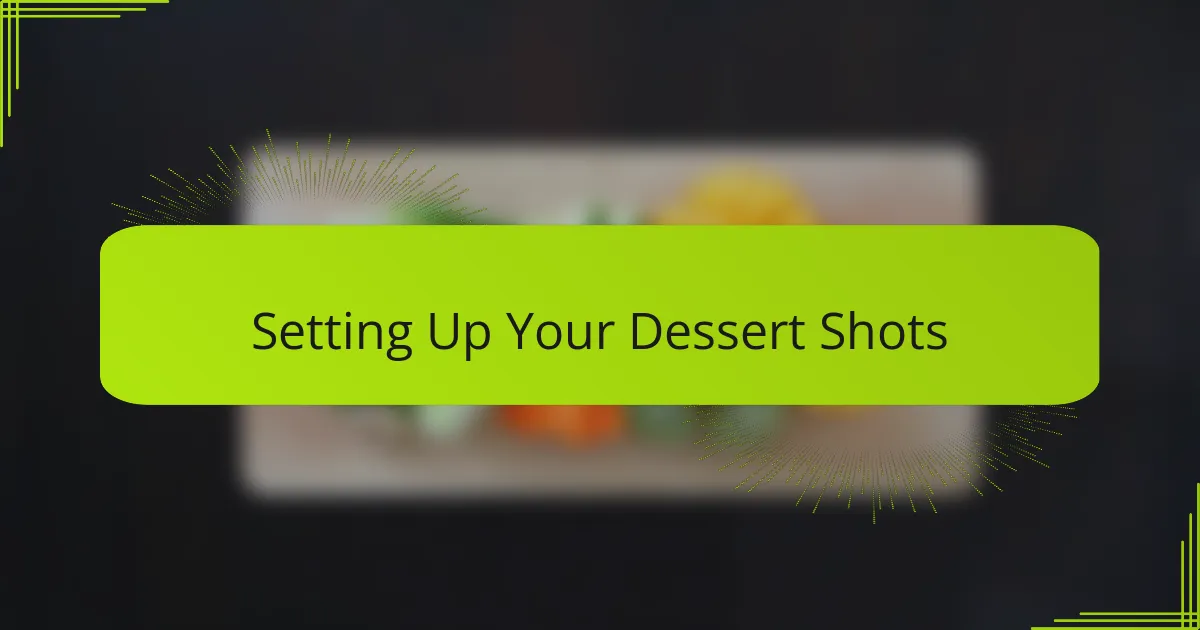
Setting Up Your Dessert Shots
Setting up my dessert shots always starts with finding the perfect spot by a window where natural light floods in softly. I remember once trying to shoot in a dark corner and how dull the image turned out—lesson learned! Have you noticed how even a slight shift toward the light can make frosting glisten and textures pop?
I like to arrange my desserts thoughtfully, thinking about the flow of the shot. Sometimes I place a slice slightly askew or add a bite taken out to tease the viewer’s taste buds. It’s those little tweaks that turn a flat photo into something that feels alive and inviting—do you play around with positioning like that too?
Choosing the right props feels like setting the stage for a delicious performance. Neutral plates, delicate forks, or a sprinkle of powdered sugar can all set the mood without stealing the spotlight. Early on, I overloaded my shots with bright patterns and clutter, and the desserts lost their charm. Since then, simplicity has become my best friend in styling.
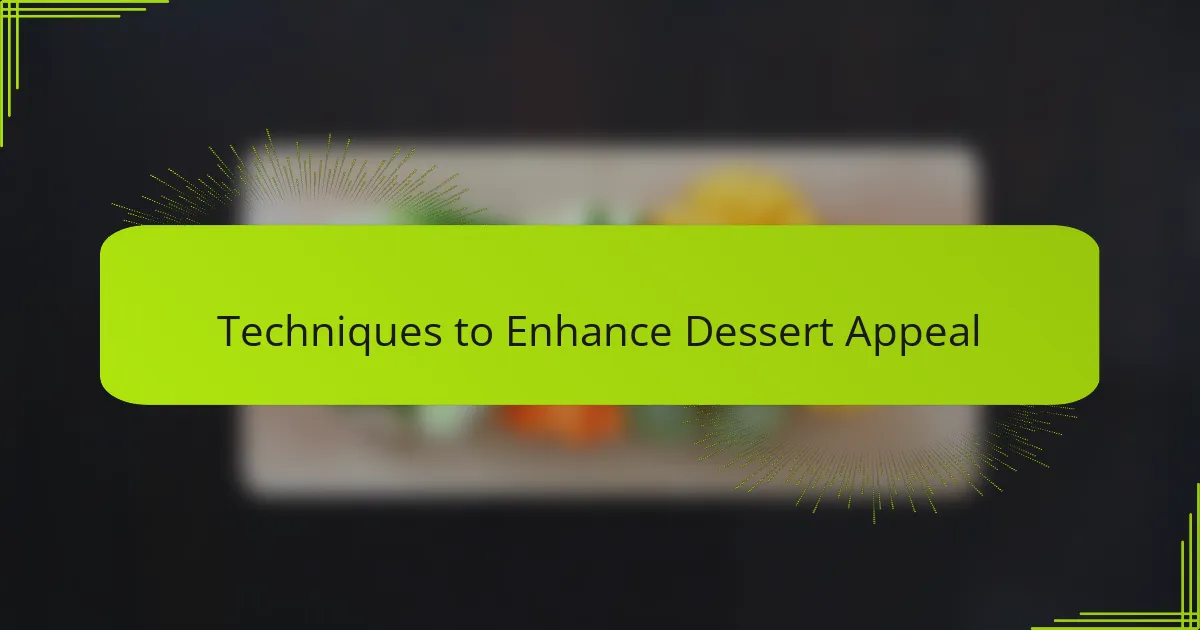
Techniques to Enhance Dessert Appeal
One technique that truly transformed my dessert photos was mastering the art of garnishing. A simple sprinkle of fresh mint leaves or a dusting of powdered sugar added that ‘wow’ factor I hadn’t noticed before. Have you ever felt how a tiny detail can turn a casual snapshot into a mouthwatering invitation?
I found texture contrasts to be another game-changer. Pairing glossy glazes with crunchy elements or soft whipped cream made my images pop with depth and interest. It’s funny—sometimes the most appealing photos come from emphasizing the dessert’s tactile qualities rather than just perfect symmetry. Do you find yourself reaching out to taste when you see those textures?
Finally, playing with color and contrast helped me bring my desserts to life in pictures. A vibrant berry topping on a pale cheesecake creates a focal point that the eye can’t resist. I learned the hard way that balancing colors in the frame is like composing a painting; too much or too little dulls the appeal. What color combinations do you think make your desserts irresistible?

Editing Tips for Dessert Images
When I first dove into editing my dessert photos, I realized how crucial subtle adjustments like brightness and contrast were. Enhancing these just a tad made the colors pop and textures leap off the screen. Have you ever noticed how a slight tweak in brightness can make a chocolate drizzle look richer or a berry glisten juicier?
I also swear by sharpening selectively—focusing on the dessert’s key features, like crisp edges or glossy toppings, while keeping the background soft. This technique helps draw the viewer’s eye exactly where I want it without making the photo look overdone. It took me a few tries to strike that balance between crispness and natural softness; have you experimented with selective sharpening before?
One tip I learned the hard way was to avoid over-saturating colors. At first, I thought pumping up the reds and yellows would catch more attention, but it quickly made my images look artificial. Instead, I now prefer gentle boosts that maintain the dessert’s true look, making the photo inviting and authentic. Isn’t it better when a picture makes you crave the dessert instead of questioning if it’s real?
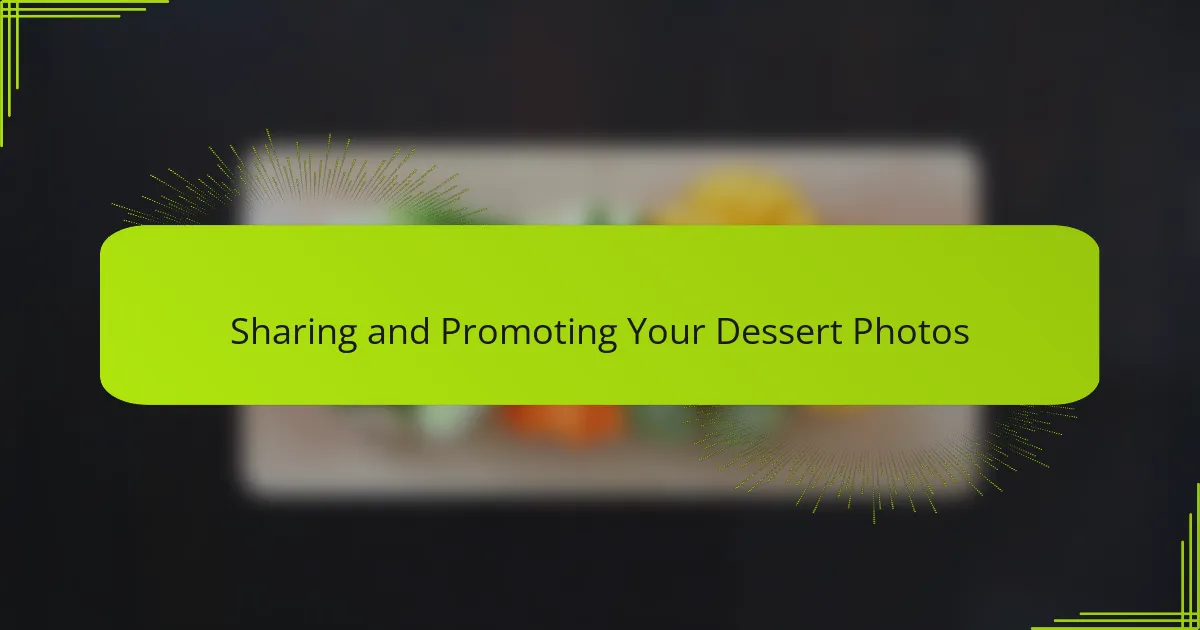
Sharing and Promoting Your Dessert Photos
Sharing my dessert photos was a whole new challenge after I felt confident taking them. I started posting on Instagram and noticed that using relevant hashtags helped my images reach fellow dessert lovers who appreciated the details I worked hard to capture. Have you ever wondered why some photos get more likes? Sometimes it’s just about connecting with the right community.
I learned quickly that timing matters, too. Posting when people are scrolling for dessert inspiration—like Sunday afternoons—makes a bigger difference than I expected. It’s funny how a well-timed post can spark conversations and even recipe requests. Do you time your posts around when your audience is most active?
Engaging with others also boosted my reach. Commenting on fellow foodies’ work and responding to those who comment on mine turned the sharing experience into a fun, interactive exchange. It didn’t just promote my photos; it created connections that made the whole process more rewarding. Have you tried building a little dessert-loving community around your photos?
